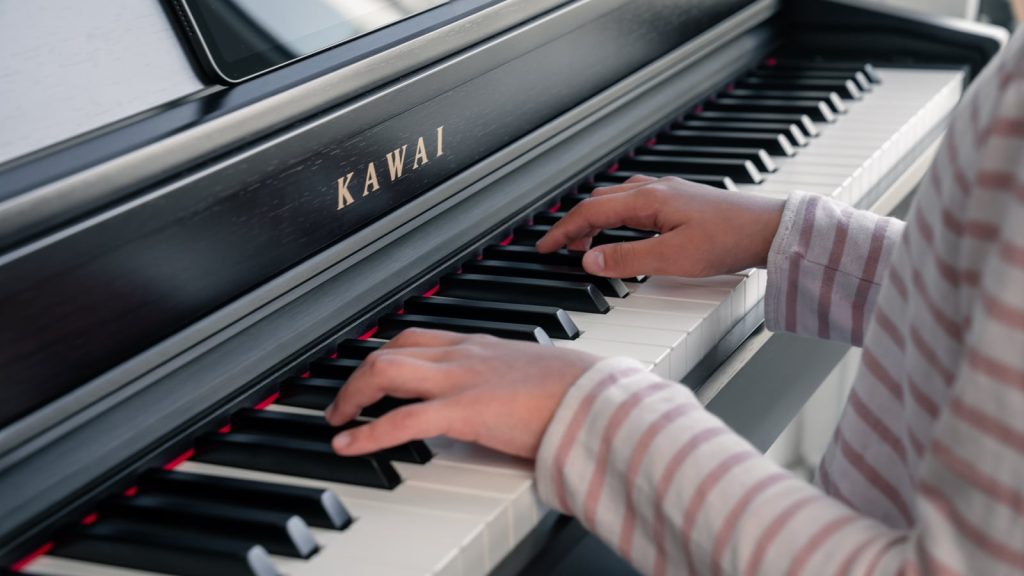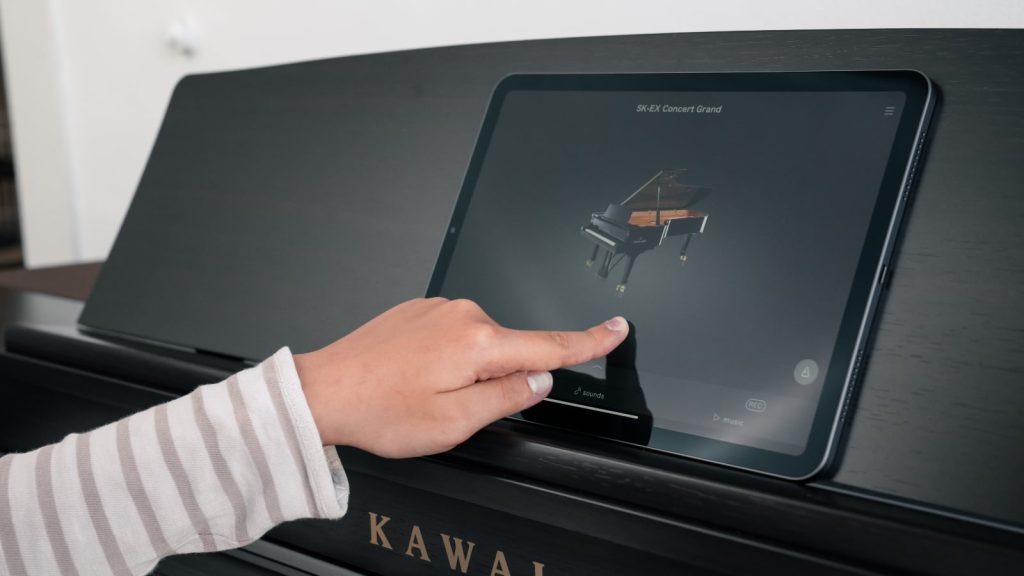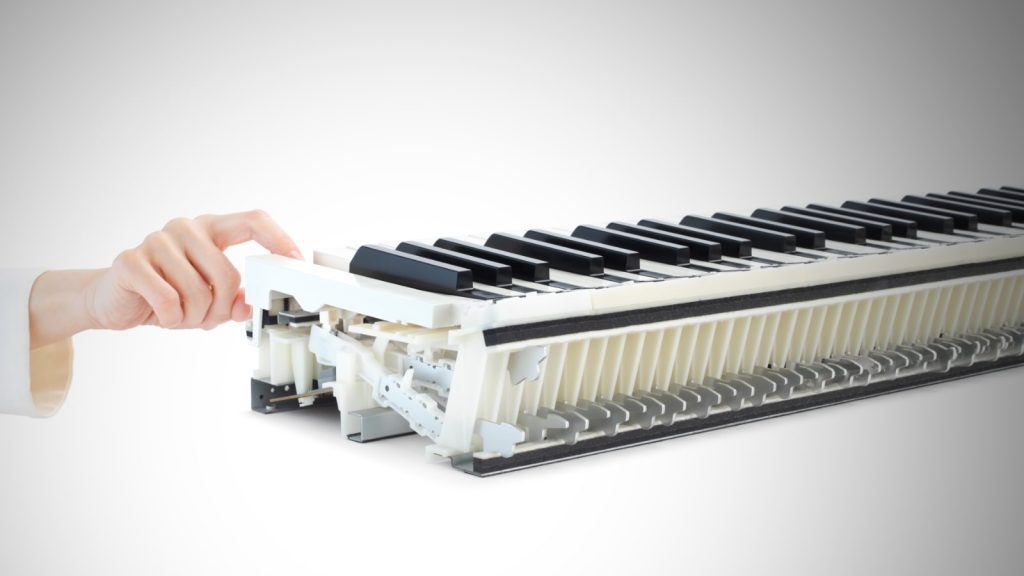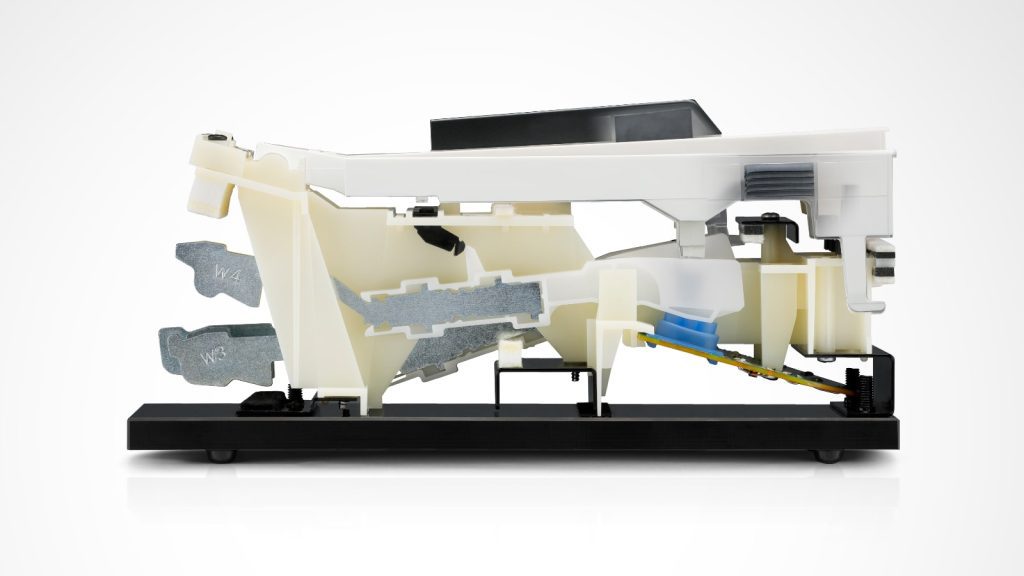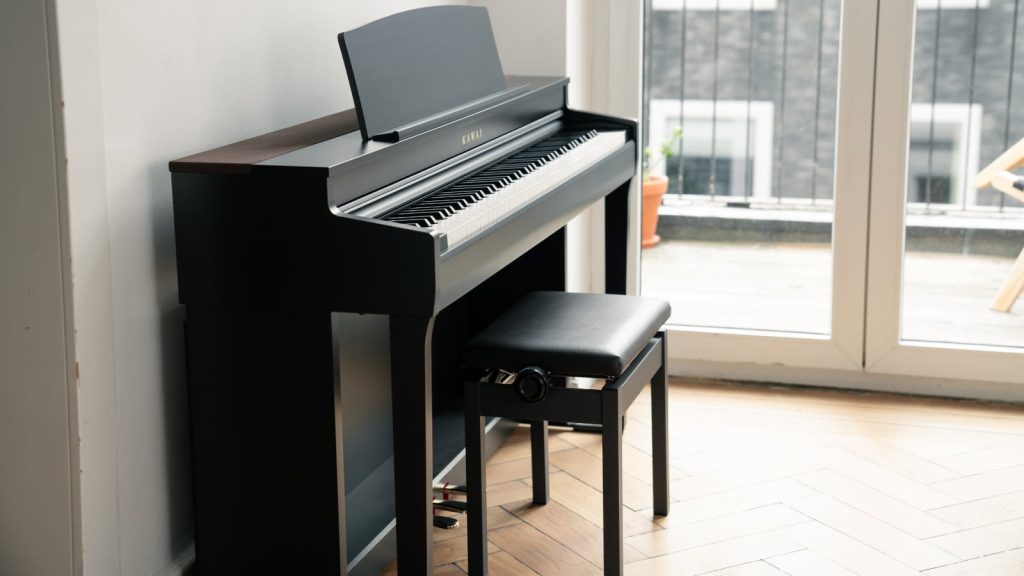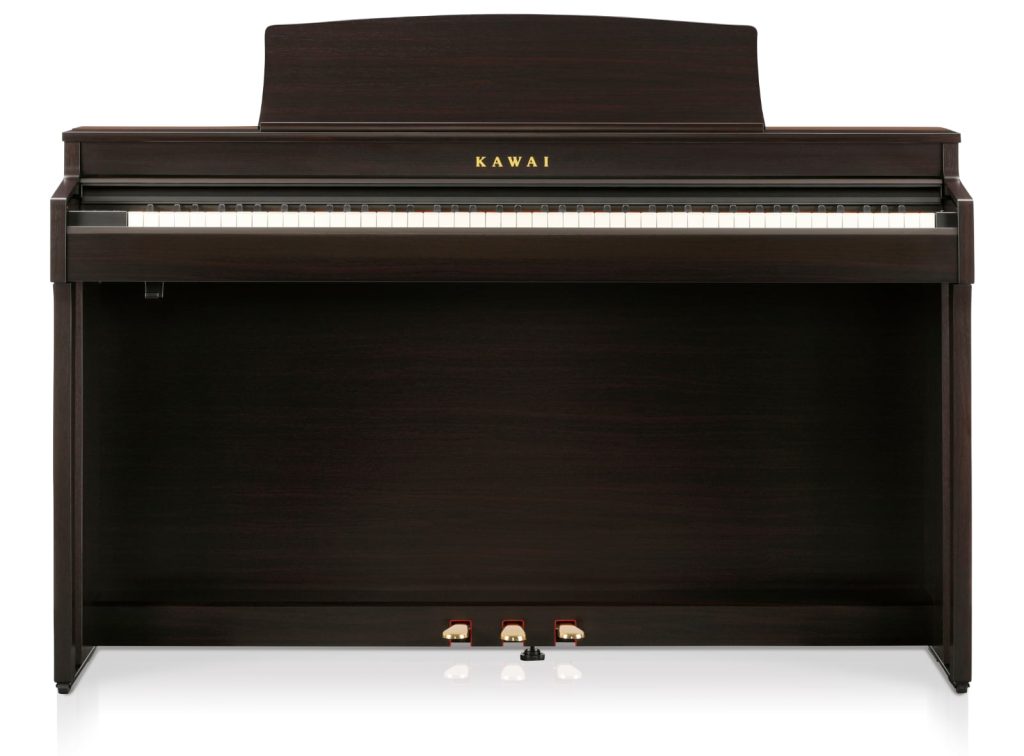CN-301 vs. CN-39
There are some conceptual changes: while the CN-39 had over 200 sounds, the CN-301 comes with “only” 45. Obviously, the predecessor model was designed to offer a wide variety of sounds.
A positive aspect of the CN-301’s streamlining is that it lets go of accessory sounds (which in most cases, you’d rarely use anyway). Instead, it concentrates on the important sounds you would expect from a digital piano: pianos, pianos, pianos.
A subtle but successful improvement concerns the RH-3 keyboard, which plays even better thanks to more precise keyboard action and optimized key cushioning. Last but not least, the CN-301 has a new speaker system.
CN-301 vs. CN-201
The biggest difference concerns the speaker systems. Even though both digital pianos are equally powerful with 2×20 watts, there is a clear difference in sound. Thanks to the additional top-mounted speakers, the CN-301 sounds clearer, richer, and more voluminous.
There are many similarities in sound, as the CN-201 and CN-301 feature the same type of sound generation: Progressive Harmonic Imaging with 88-key sampling. The difference, however, is in the polyphony: the CN-201 has 192 voices, while the CN-301 has 256-voice polyphony. The CN-201 does not have the split function of the CN-301, and the CN-301 also has a wider range of effects.
There are also differences in the recorder: the MIDI recorder on the CN-301 not only has a larger recording capacity but also offers 16 tracks and a loop function. The recorder section of the CN-301 also lets you record the performance as an audio file (WAV, MP3) to USB media. The metronome comes with more time signatures as well as rhythms that the CN-201 does not have at all.
CN-301 vs. Kawai CA-49
These two Kawai models are identical in price, although the CA-49, as the smallest model of the CA series, scores with a wooden-key keyboard and a more powerful hammer action. When comparing the CN-301 and the CA-49, it should be noted that the CA-49 has an older sound generation system, but also fewer features in terms of speaker system, learning and recording functions, as well as a smaller sound selection.

